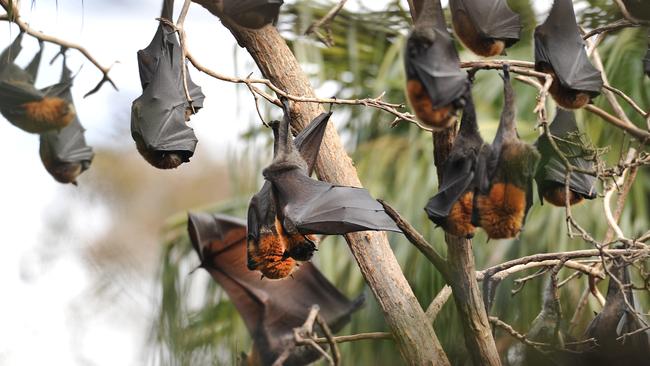Balgowlah residents asked to nurture 3,000 rambunctious bats as part of council management plan
A COUNCIL plan intended to help residents deal with a rowdy colony of bats has instead urged them to nurture the species.

Nth Beaches
Don't miss out on the headlines from Nth Beaches. Followed categories will be added to My News.
A COUNCIL plan intended to help residents deal with a rowdy colony of bats has instead urged them to nurture the species.
The management plan, which was put forward at a council meeting on Monday night, included spraying water on the bats to cool them down on hot days.
Despite the plan being accepted, councillors have ridiculed some of the recommendations and said not all of them, including the heat control, will be actioned.
FLYING FOX GRANT TO BE WEEDED WITH GRANT
The colony of about 3000 grey-headed flying foxes made itself at home in bushland at Burnt Bridge Creek in Balgowlah six years ago. Residents are frustrated over the smell and noise of the creatures.
The animals are listed as vulnerable under the Threatened Species Conservation Act 1995. Given this, Manly Council is responsible for protecting them.

Councillor Adele Heasman said she understood they were a protected species but the priority had to be the residents.
“It’s all very well to say they’re protected, but think of their neighbours,” she said. “If we can’t remove them, maybe we could create a buffer zone. People who don’t live there don’t appreciate the noise and aroma at night; the effect on washing, the gardens and children’s play activities.”
A PLAN TO DRIVE OUT THE GREY-HEADED FLYING-FOX
Other key actions of management include the use of hand tools rather than noisy machinery (especially in the breeding cycle); having a wildlife carer during construction to stop work if the bats become stressed and increasing the availability of feed trees.
Nancy Watkins, who has lived in the area for 45 years, said the bats have gotten worse every year since they arrived.
“The noise is the worst — in the early hours of the morning when they’re coming home, the screech is unbelievable,” she said.
“The smell is also dreadful and even worse in the wet. We have to close our windows when it rains just to keep the stench out.”
Councillor Alan Le Surf did not understand why they were protected. “I thought the intent of this report was how to move them on. I can’t understand how they could be considered protected considering the vast numbers across the state,” he said.
Councillor Candy Bingham said the protected species issue should be addressed. “Maybe it’s time for a review about the species,” she said.
There have been three confirmed cases of humans contracting bat lyssavirus. All have been in Queensland.


